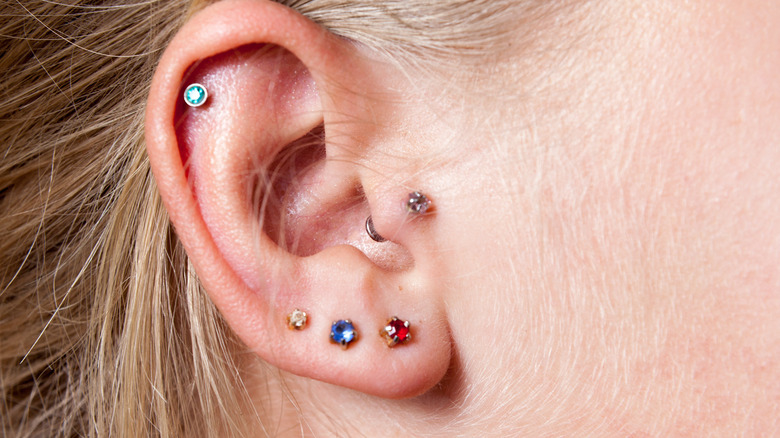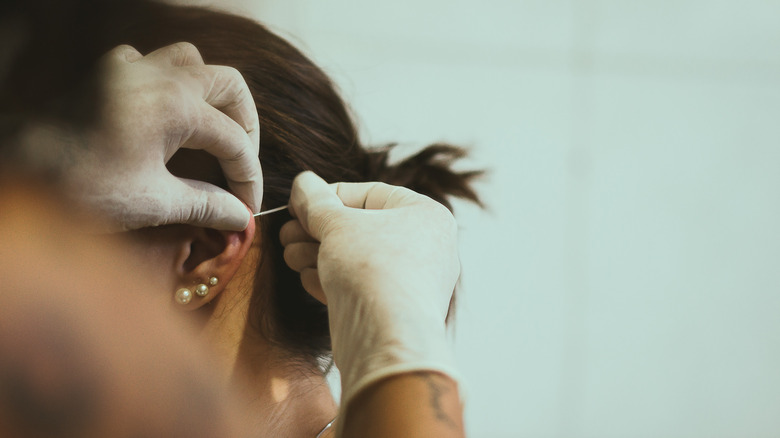How To Tell If Your Piercing Is Infected
While piercings can be a fun way to express yourself, keep in mind it is an open wound that can take up to several weeks to completely heal (via the Cleveland Clinic). While millions of people get their ears or other parts of their bodies pierced and have no complications, some people will get an infection. Signs of an infected piercing include swelling, redness, soreness, itchiness, and warmth or tenderness at the site of the piercing. It may also ooze blood or white, yellow, or green pus and can cause a fever.
An infected piercing is typically caused by harmful bacteria getting into the open wound. This may happen if you get your ears pierced with unsterilized equipment, touch your ears with dirty hands, remove earrings before the piercing has healed fully, or if you forget to clean your new piercing daily. It's also possible to catch an infection by swimming or submerging your head in a pool, hot tub, river, or lake before your piercing has healed.
How to treat an infected piercing
Luckily, most piercing infections are mild and can be treated at home. However, if you believe you have an infection in the ear cartilage, or the hard tissue in the rim of your ears, see your doctor (via Mayo Clinic). For minor infections in soft tissue, you'll want to take care to thoroughly clean the piercing site. The first thing to do is wash your hands with soap and water. Then make a salt water solution with 1 cup of water and a half teaspoon of salt, stirring until it dissolves. Leave the jewelry in place and soak a cotton ball in the salt water mixture and place it on the affected area. Dry the area with clean gauze or a tissue. You can then apply an over-the-counter antibiotic cream like Neosporin or bacitracin. It's also a good idea to turn the jewelry with clean hands to prevent it from sticking to skin.
Repeat this routine three times a day until the symptoms gets better. Make sure anything that touches your ear, like your phone, is clean. It's also recommended that you change your pillowcase every two days. After three days, if the infection hasn't improved, it's time to see your doctor.


